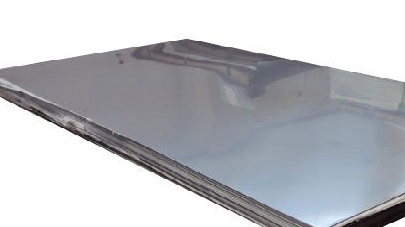What makes stainless steel 316 and 304 SS Metal popular for stainless steel tanks?
Stainless steel plates and sheets are widely favoured for tank manufacturing due to their exceptional properties. Renowned for their corrosion resistance, strength and versatility, stainless steel sheets offer unparalleled durability in various industrial applications. Their smooth, non-porous surface ensures hygiene and cleanliness, which is crucial for industries like food and pharmaceuticals. Additionally, stainless steel’s ability to withstand high pressures, temperatures, and harsh environments makes it a reliable choice for tank construction. Its recyclability further underscores its sustainability. In essence, stainless steel plates and sheets emerge as the premier option, meeting stringent requirements across diverse industries for safe, durable, and efficient tank solutions.


Stainless steel is revered across numerous industries for its cost-effectiveness and exceptional resistance to corrosion, making it an optimal choice for tank fabrication. Among the various types of stainless steel available, four stand out prominently: Stainless Steel 304 Sheet, Stainless Steel 304L Plate, and 316 Grade / 316 Stainless Steel Sheet, each offering distinct advantages depending on the specific requirements of the application.
304 stainless steel, known for its versatility and widespread use, comprises 18-20% chromium and 8-12% nickel. Its 304L counterpart contains a lower carbon content to prevent sensitization, enhancing its corrosion resistance, particularly in high-temperature environments. These variants are extensively utilized in food processing, pharmaceuticals, and dairy industries, where corrosion resistance and hygiene are paramount.
Stainless steel 316 and its variant, 316L, exhibit superior corrosion resistance due to their molybdenum content ranging from 2-3%. Grade 316, with 10-14% nickel, finds application in chemical and marine storage facilities thanks to its enhanced resistance to corrosive environments. On the other hand, 316L, featuring a low carbon composition similar to 304L, offers protection against sensitization in high-temperature settings, making it an ideal choice for applications mirroring those of 304L.
Another noteworthy option for tank fabrication is duplex stainless steel, renowned for its unique blend of austenitic and ferritic properties. With a composition typically comprising 20-28% chromium, 5-8% nickel, and 2-5% molybdenum, duplex stainless steel excels in resisting stress corrosion cracking. Moreover, its lower nickel content often translates to cost savings without compromising mechanical strength, making it an attractive choice across various industries.
Industries can make well-informed decisions regarding tank fabrication by comprehensively understanding the distinctive characteristics and applications of these stainless steel types. Whether prioritizing corrosion resistance, mechanical durability, or cost-effectiveness, selecting the appropriate stainless steel variant ensures optimal performance and longevity of tanks across diverse industrial settings.
Stainless steel remains the material of choice for tank fabrication due to its unparalleled affordability, corrosion resistance, and durability. Each type offers unique advantages tailored to specific industrial applications, from the versatile 304 and 304L variants to the corrosion-resistant 316 and 316L grades and the robust duplex stainless steel. By leveraging this knowledge, industries can optimize tank fabrication processes, ensuring reliable performance and longevity in demanding operational environments.
Different types of stainless steel tanks utilize varying grades of steel plates and sheets for fabrication. Here's an overview of the common types of stainless steel tanks and the materials typically employed in their construction:
1. Storage Tanks: Stainless steel storage tanks are frequently crafted using plates and sheets of grades 304 or 316. These grades are favoured for their exceptional corrosion resistance and versatility. Higher-grade options like 316L or duplex stainless steel may be employed in more demanding environments.
2. Pressure Vessels: Pressure vessels necessitate materials capable of withstanding high pressures while resisting corrosion. Grade 316 stainless steel plates and sheets are often selected for superior corrosion resistance and strength. Duplex stainless steel or higher nickel content grades like 317 or 904L may be preferred in highly corrosive settings.
3. Mixing Tanks: Constructed using SS 304 Plate and sheets of grades 304 or 316, providing corrosion resistance and durability. For applications involving highly corrosive environments, duplex stainless steel or higher alloyed grades like 904L may be utilized.
4. Fermentation Tanks: Essential in the food and beverage industry, fermentation tanks require hygienic and corrosion-resistant materials. Plates and sheets of grades 304 and 316L stainless steel are commonly used for their excellent corrosion resistance and food-grade properties.
5. Bioreactors: These tanks demand biocompatible, corrosion-resistant materials and are compatible with sterilization processes. Stainless steel plates and sheets of grades 316L and 904L are often chosen for their corrosion resistance and compatibility with pharmaceutical and biotechnological applications.
6. Chemical Reaction Tanks: We utilize stainless steel plates and sheets of grades such as 316, SS 316l plate, duplex stainless steel, or higher alloyed grades like 2205 or 2507 for their corrosion resistance and chemical compatibility.
7. Water Tanks: Typically fashioned from stainless steel plates and sheets of grades 304 and 316 due to their corrosion resistance and compatibility with potable water. These tanks may also integrate finishes to inhibit bacterial growth.
8. Heat Exchanger Tanks: These tanks require materials capable of withstanding high temperatures and resisting corrosion from heat transfer fluids. Stainless steel plates and sheets of grades 304, 316 or duplex stainless steel are commonly used for thermal conductivity and corrosion resistance.
The selection of stainless steel grade for tank construction depends on the specific application, operating conditions, regulatory standards, and budgetary constraints. Stainless steel plates and sheets offer versatility and durability, making them suitable for various types of tank fabrication.

